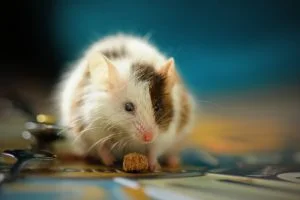Featured Products
Explore Products
- In-Stock Tumor Cell Lines
- Human Orbital Fibroblasts
- Human Microglia
- Human Pulmonary Alveolar Epithelial Cells
- Human Colonic Fibroblasts
- Human Type II Alveolar Epithelial Cells
- Human Valvular Interstitial Cells
- Human Thyroid Epithelial Cells
- C57BL/6 Mouse Dermal Fibroblasts
- Human Alveolar Macrophages
- Human Dermal Fibroblasts, Adult
- Human Lung Fibroblasts, Adult
- Human Retinal Muller Cells
- Human Articular Chondrocytes
- Human Retinal Pigment Epithelial Cells
- Human Pancreatic Islets of Langerhans Cells
- Human Kidney Podocyte Cells
- Human Renal Proximal Tubule Cells



 The Engelbreth-Holm-Swarm (EHS) cell line, derived from mouse chondrosarcoma, stands out for its significant production of basement membrane (BM) components like laminin and type IV collagen. These components find extensive use as cell culture substrates imitating BM functions. Beyond their BM contributions, EHS cells express a rich repertoire of machinery necessary for efficient BM component generation, including post-translational modification enzymes and molecular chaperones. EHS further displays elevated expression of matched transcription factor isoforms like Gata4/Gata6, Sox7/Sox17, and Cited1/Cited2, underscoring its value as a research model for investigating complex cellular processes.
The Engelbreth-Holm-Swarm (EHS) cell line, derived from mouse chondrosarcoma, stands out for its significant production of basement membrane (BM) components like laminin and type IV collagen. These components find extensive use as cell culture substrates imitating BM functions. Beyond their BM contributions, EHS cells express a rich repertoire of machinery necessary for efficient BM component generation, including post-translational modification enzymes and molecular chaperones. EHS further displays elevated expression of matched transcription factor isoforms like Gata4/Gata6, Sox7/Sox17, and Cited1/Cited2, underscoring its value as a research model for investigating complex cellular processes.